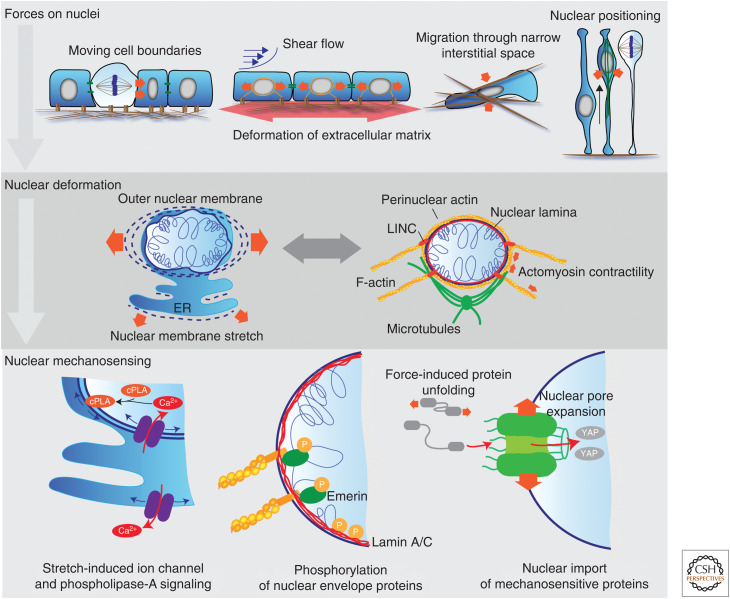Figure 1.
The nucleus as a mechanosensor. The nucleus is subject to deformation forces (red block arrows) when cells are compressed, stretched, or actively contracting during various tissue processes (upper panel). Nuclear deformation causes stretching of the nuclear envelope and the associated endoplasmic reticulum (ER). The amount of force transmitted, and the degree of deformation is modulated by the nuclear-cytoplasmic linkage and the stiffness of the nuclear lamina and chromatin. Perinuclear actin and microtubule networks exert contractile and compressive forces on the nucleus to counteract deformation and regulate nuclear shape (middle panel). Nuclear deformation and stretching of nuclear membranes activate stretch-induced ion channels causing elevated intracellular Ca2+ levels and incorporation of phospholipase A2 (cPLA) into the nuclear membrane (bottom left). Mechanical force transmitted by the linker of nucleoskeleton and cytoskeleton (LINC) complex induces phosphorylation of emerin and lamin A/C through unknown mechanisms (bottom middle). Nuclear deformation can lead to expansion of the nuclear pore to facilitate nuclear import. Import of mechanically unstable and mechanosensitive proteins such as YAP are induced by force (bottom right).

